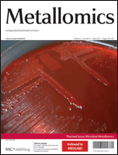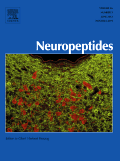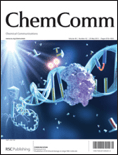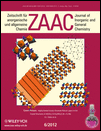
Metallomics
Scope & Guideline
Decoding the Role of Metals in Living Systems
Introduction
Aims and Scopes
- Trace Element Homeostasis:
Research exploring how trace elements such as zinc, copper, and iron are regulated within biological systems, including their roles in cellular functions and potential implications for various diseases. - Metal-Protein Interactions:
Studies focusing on the interactions between metals and proteins, particularly metalloproteins, and how these interactions influence biological processes such as enzyme activity, metal transport, and cellular signaling. - Metals in Disease Mechanisms:
Investigations into the role of metals in the pathogenesis of diseases, including neurodegenerative conditions, cancer, and metabolic disorders, highlighting how metal dysregulation can contribute to disease progression. - Innovative Analytical Techniques:
Development and application of advanced analytical methods such as synchrotron X-ray fluorescence, ICP-MS, and laser ablation techniques to study metal distribution and speciation in biological samples. - Environmental Metallomics:
Research addressing the impact of environmental metals and metalloids on biological systems, including studies on bioaccumulation, toxicity, and the role of metals in ecosystems.
Trending and Emerging
- Biomarker Development:
An increasing number of studies are focusing on the use of metal stable isotopes and metalloproteins as potential biomarkers for diseases such as Alzheimer's and cancer, highlighting the translational aspect of metallomics research. - Nanotechnology and Metal-based Therapeutics:
Research into the development of metal-based nanoparticles and complexes for therapeutic applications is on the rise, showcasing innovative approaches to drug delivery and cancer treatment. - Metallomics in Microbial Systems:
Emerging studies are exploring the role of metals in microbial behavior, including metal resistance and homeostasis, reflecting a growing interest in the interactions between metals and microorganisms. - Metallomics and Gut Microbiome Interactions:
There is a notable trend towards understanding how trace metals influence gut microbiota composition and function, linking nutritional aspects of metallomics with health outcomes. - Metals in Aging and Neurodegeneration:
Research focusing on the roles of metals in aging processes and neurodegenerative diseases is gaining traction, emphasizing the need to understand metal homeostasis as a critical factor in health and disease.
Declining or Waning
- Traditional Metal Toxicity Studies:
Research focused solely on the toxicity of metals without considering their biological roles is becoming less frequent as the field shifts towards understanding the nuanced roles of metals in biological systems. - Basic Metal Biochemistry:
Studies that solely describe the biochemical properties of metals without linking them to physiological or pathological processes are seeing reduced publication frequency, as the focus moves towards integrative approaches. - Animal Models in Isolation:
Research utilizing animal models to study metal interactions is declining in favor of more integrated approaches that combine in vitro and in silico methods, reflecting a trend towards more comprehensive and ethically considerate research methodologies.
Similar Journals

JOURNAL OF BIOSCIENCES
Elevating Knowledge in Molecular Biology and GeneticsJOURNAL OF BIOSCIENCES, published by the Indian Academy of Sciences, has established itself as a pioneering platform in the fields of biosciences, encompassing diverse research areas such as agricultural and biological sciences, biochemistry, genetics, molecular biology, and medicine. With an impressive trajectory since its inception in 1979, the journal has achieved notable recognition, securing a Q1 ranking in Agricultural and Biological Sciences and maintaining its place in the top quartiles for Biochemistry and Medicine as of 2023. With Scopus rankings placing it at #32 in General Agricultural and Biological Sciences and #65 in General Biochemistry, Genetics, and Molecular Biology, the journal reaches the 85th and 70th percentiles respectively, reflecting its impact and relevance in current scientific discourse. Although it does not offer open access, the JOURNAL OF BIOSCIENCES remains crucial for researchers, professionals, and students dedicated to advancing knowledge and innovation within the biosciences, providing a vibrant forum for high-quality research and comprehensive reviews.

Neuropeptides
Connecting Researchers to Groundbreaking DiscoveriesNeuropeptides is a prestigious, peer-reviewed journal published by Elsevier, focusing on the critical role of neuropeptides in various biological processes and their implications in cellular and molecular neuroscience, endocrinology, and neurology. With an impact factor reflecting its influence in the field and a diverse audience ranging from researchers to healthcare professionals, the journal serves as an essential platform for the dissemination of groundbreaking research from 1980 to 2024. Adhering to high academic standards, Neuropeptides holds a Q3 ranking in Cellular and Molecular Neuroscience and Endocrine and Autonomic Systems, alongside a solid Q2 ranking in both Endocrinology and Neurology. This positions the journal at the forefront of its disciplines, contributing valuable insights into the understanding of neuropeptide functions in health and disease. By not operating as an Open Access journal, it ensures sustainability in the publishing process while upholding rigorous review standards. Researchers, professionals, and students are encouraged to engage with the findings published in this journal, which plays a vital role in advancing knowledge and fostering collaboration within the neuroscientific community.

CHEMICAL COMMUNICATIONS
Advancing the frontiers of chemical knowledge.Chemical Communications, published by the esteemed Royal Society of Chemistry, is a prominent journal within the field of chemical science, focusing on the dissemination of cutting-edge research in a variety of sub-disciplines including catalysis, materials chemistry, and electronic materials. Operating without an open access model, this journal provides critical insights from contributors around the globe, enhancing our understanding of complex chemical interactions and innovative applications. Ranked in the top quartile for several categories such as Ceramics and Composites, and Metals and Alloys, Chemical Communications boasts impressive Scopus rankings, securing strong positions across multiple fields and showcasing its influence within the scientific community. The journal is committed to advancing knowledge and fostering collaboration among researchers, professionals, and students, making it an invaluable resource for those looking to stay abreast of the latest advancements in chemistry and materials science. With a publication history dating back to 1965 and continuing into 2024, its rich archive serves as a vital repository of chemical research and development.

Journal of Cell Communication and Signaling
Transforming Understanding of Cellular CommunicationThe Journal of Cell Communication and Signaling is a prestigious academic journal published by Springer, focused on advancing the understanding of cellular communication mechanisms and signaling pathways. Since its inception in 2007, this journal has established itself as a leading platform in the field, with a strong impact reflected in its 2023 categorizations: Q1 in Biochemistry, Q2 in Cell Biology, and Q2 in Molecular Biology. Researchers from around the globe rely on its rigorous peer-reviewed articles to gain insights into the complex molecular dialogue that underpins various biological processes. With an ISSN of 1873-9601 and E-ISSN of 1873-961X, the journal is committed to disseminating high-quality research that informs both academic studies and practical applications in biotechnology and medicine. Although not an open access publication, it provides essential resources tailored for professionals, students, and researchers, enhancing their knowledge of critical signaling pathways that drive health and disease. The journal is located in the Netherlands, at VAN GODEWIJCKSTRAAT 30, DORDRECHT, and stands out in the field, boasting impressive ranks among its peers in the Scopus database.

TRANSITION METAL CHEMISTRY
Exploring the Frontiers of Inorganic InnovationTransition Metal Chemistry is a distinguished journal published by Springer, focusing on the latest advancements in the field of inorganic chemistry, materials science, and metals and alloys. With an impressive publication history dating back to 1975, this journal serves as an essential platform for researchers and professionals seeking to explore the complexities and innovations in transition metal chemistry. Transition Metal Chemistry holds a Q4 ranking in Inorganic Chemistry and positions itself in Q3 within both Materials Chemistry and Metals and Alloys categories, highlighting its evolving influence in these domains. With a Scopus ranking of #41 in Inorganic Chemistry and #56 in Materials Science, it provides readers with valuable insights into research trends and discoveries. Although it does not offer open access, its rigorous peer-review process ensures that only the most impactful and validated studies are published. By bridging theoretical concepts and practical applications, Transition Metal Chemistry plays a pivotal role in advancing scientific knowledge, attracting a diverse audience of researchers, students, and industry professionals committed to unraveling the complexities of transition metals.

JOURNAL OF BIOLOGICAL INORGANIC CHEMISTRY
Advancing Insights into Inorganic Elements in Biology.JOURNAL OF BIOLOGICAL INORGANIC CHEMISTRY, published by Springer, serves as a pivotal platform for the dissemination of research that intersects the fields of biochemistry and inorganic chemistry. With a commitment to advancing our understanding of the intricate roles that inorganic elements and compounds play in biological systems, this journal addresses a diverse array of topics from metal ion interactions in biological processes to the design of biomimetic systems. Hailing from Germany and reaching a global audience, it has maintained a distinguished status in its field, achieving a Q2 ranking in Inorganic Chemistry and a Q3 ranking in Biochemistry as of 2023, reflecting its impactful contributions to the scientific community. Although currently not open access, the journal provides vital insights that are essential for researchers, professionals, and students alike, promoting knowledge and collaboration in a rapidly evolving scientific landscape. With an expansive range of articles published since 1996, the JOURNAL OF BIOLOGICAL INORGANIC CHEMISTRY continues to be an indispensable resource for anyone working at the intersection of chemistry and biology, especially in understanding the biochemical implications of inorganic substances.

BIOCHEMICAL AND BIOPHYSICAL RESEARCH COMMUNICATIONS
Fostering innovation in biochemical and biophysical research.BIOCHEMICAL AND BIOPHYSICAL RESEARCH COMMUNICATIONS, published by Academic Press Inc Elsevier Science, stands as a leading periodical in the fields of biochemistry, biophysics, cell biology, and molecular biology. With an ISSN of 0006-291X and an E-ISSN of 1090-2104, this esteemed journal has been a pivotal platform for the dissemination of groundbreaking research since its inception in 1959, continuing to publish influential findings through at least 2024. It holds a commendable Q2 ranking in Biochemistry and Q1 status in Biophysics as of 2023, reflecting its high impact and relevance in the field, supported by its strong Scopus rankings—ranking #43 in Biophysics and maintaining a presence in the top quartiles of several related categories. Although it is not an open-access journal, it provides critical insights and essential data that cater to researchers, professionals, and students keen on advancing their understanding of complex biochemical and biophysical processes. Its significant contributions to the scientific community underscore the importance of this journal as a reference point for innovative research and collaborative discourse.

Cell Communication and Signaling
Illuminating the Pathways of Cellular DialogueCell Communication and Signaling is a premier peer-reviewed journal published by BMC that has made significant contributions to the fields of biochemistry, cell biology, and molecular biology since its establishment in 2003. As an open access journal, it offers unrestricted access to high-quality research, fostering collaboration and innovation among scientists around the globe. The journal is distinguished by its Q1 ranking in all three relevant categories for 2023, underscoring its critical role in advancing the understanding of cellular communication mechanisms and signaling pathways. Positioned within the United Kingdom, Cell Communication and Signaling has been an invaluable resource for researchers, professionals, and students alike, ensuring that the latest findings are accessible to a diverse range of audiences. With an impressive Scopus ranking—placing it in the top percentiles within its subject areas—this journal continues to set the standard for excellence in the pursuit of understanding complex cellular interactions.

ZEITSCHRIFT FUR ANORGANISCHE UND ALLGEMEINE CHEMIE
Exploring the Depths of Inorganic ChemistryZEITSCHRIFT FUR ANORGANISCHE UND ALLGEMEINE CHEMIE, published by WILEY-V C H VERLAG GMBH, is a pivotal journal in the field of inorganic chemistry, catering to the needs of researchers, professionals, and students seeking to advance their understanding of this dynamic discipline. With its historical roots dating back to 1892 and a commitment to high-quality research, this journal provides a platform for the dissemination of significant findings related to inorganic substances and their general chemistry. Although currently not an open-access journal, it holds a competitive position with an impact factor placing it in the Q3 quartile of the Inorganic Chemistry category, ranking #57 out of 79 in Scopus. Situated in Germany, this journal not only connects past and present research endeavors but also aims to foster innovation and collaboration within the inorganic chemistry community. Whether you are exploring fundamental concepts or groundbreaking applications, ZEITSCHRIFT FUR ANORGANISCHE UND ALLGEMEINE CHEMIE remains an invaluable resource for advancing chemical sciences.

Function
Unraveling biological complexities for transformative healthcare solutions.Function is a pioneering open access academic journal published by Oxford University Press, dedicated to advancing research in the fields of Cancer Research, Cell Biology, Molecular Medicine, and Physiology. Since its inception in 2020, this journal has quickly established itself as a vital resource for researchers and professionals alike, achieving a commendable impact factor in the 2023 rankings, where it stands in the Q2 quartile across multiple categories. Located in the heart of the United Kingdom, Function aims to foster a global exchange of knowledge by providing free and unrestricted access to cutting-edge research, facilitating collaboration and innovation within the scientific community. With a robust focus on emerging discoveries and interdisciplinary approaches, this journal encourages contributions that unravel the complexities of biological functions, paving the way for transformative advancements in healthcare and related sciences. As it converges from 2020 to 2024, Function continues to be an invaluable platform for disseminating research that has the potential to shape the future of medicine and biology.